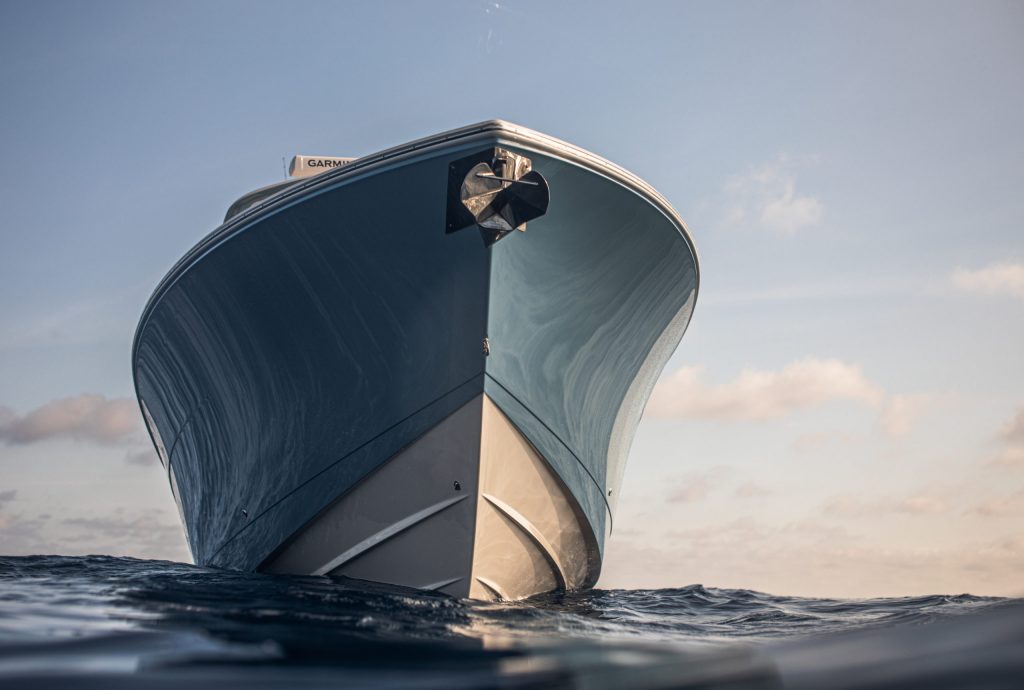

Improving Composite Part Cosmetics for VIP
As composite laminates continue to gain traction as a replacement for traditional materials, the need for highly cosmetic finishes also grows. Composites are often used in consumer products, such as boat hulls, automobile panels and sports and recreation equipment, where looks matter and poor aesthetics can result in rejected or undesirable parts. Mitigating or eliminating pits, undulations and other flaws is imperative.
It is frustrating to demold a cosmetically deficient part that requires hours or days of additional finishing work, but there are ways to prevent this issue. If key factors such as mold preparation, material selection and efficient procedures are addressed before production begins, consistently attractive parts can become the norm and save builders time, money and headaches.
Producing highly cosmetic parts using vacuum infusion processing should always begin with a comprehensive breakdown of the goals for the part. Desired weight, strength, consistency and cycle time should be defined, followed by a detailed review of the production environment and how it will vary over time. Controlled, consistent environments are ideal, and any environmental variables should be considered before material and resin selections are made.
The next – and arguably most important – consideration is the mold that will be utilized. The part will only look as good as the mold used to produce it. It’s best to address issues such as a scratched or uneven mold surface and the vacuum integrity of the mold prior to investing in the design and processing phases. Additionally, the mold support structure should be reviewed because any flex in the mold will likely lead to pre-release issues. The final step in mold preparation is to thoroughly clean and wax the mold surface, or apply suitable mold release, to reduce or prevent pre-release.
An essential next step in the infusion process is to verify the vacuum integrity prior to loading any materials into the mold. Validating the mold holds perfect vacuum, or at most two inches of mercury (inHg) loss over a five-minute duration drop test, will allow you to remove one major cause of low cosmetic parts before laying up the laminate.
With the mold prepared and its vacuum integrity verified, it’s time to begin laying up the laminate. Highly cosmetic parts will begin with a standard and evenly distributed gel coat layer totaling 20-25 mils in thickness. The next optional layer is a barrier coat, typically a lower gloss, high-strength 30 mil gel coat. This layer’s main goal is to help mitigate print through from the fiber-reinforced resin and core materials behind it.
Finally, a hand-laminated high resin content chop mat layer known as a skin coat should be applied consistently and cured to full Barcol hardness. Like the barrier coat, the skin coat prevents fiber and core print through and protects the gel coat from pre-releasing by adding stiffness and strength while the dry laminate stack is applied to the mold. For the best cosmetics, a one-ounce to three-ounce per square foot skin is recommended depending on the part size and laminate schedule.
Following the coat layers are the dry reinforcement and core layers. Many companies utilize customized multilayer reinforcements to reduce print through and additional finishing time. An example of a customized print-blocking reinforcement includes a flexible foam core, glass or polyester veil, continuous filament mat (CFM) and a flat stitch-bonded fabric combined.
Core fit and resin flow through the core are also critical considerations in achieving superior cosmetics. To ensure consistent core fit and flow, producers can utilize a kit cutter – a pre-marked, ready-to-place reinforcement and core kit cut and shaped specifically for the mold they are to be used in.
Finally, additional layers of reinforcement fabrics should be added after the core and tucked into radiuses with minimal wrinkles. Knitted fabrics provide better flow in the z-direction and typically lay flatter than woven fabrics, which reduces resin usage and opportunities for bridging. When multiple layers are used, staggering the overlaps one to one-and-a-half inches helps reduce prerelease, shrinkage and resin-rich areas. This step is crucial when infusing thick laminates in vacuum infusion processing.
With the dry lay-up complete and the part ready to be infused, it is important to work through a final pre-infusion checklist. The temperature should be above 60 degrees Fahrenheit (mold, reinforcement and resin), and a second drop test should confirm less than two-inch mercury (inHg) loss over five minutes. All material should be tucked into place, and feed and vacuum lines should be in the proper layout.
Having an established preproduction process can make the difference between good and great results. From before material is loaded into the mold until the part is ready to be infused, attention to detail is key and these steps can lead to better, more efficient and highly cosmetic products.
Scott Phillips is marketing manager for Vectorply. Email comments to sphillips@vectorply.com.
For more information on mold release and preparation, visit www.compositesmanufacturingmagazine.com, click on the Tech Talk tab and search “mold release.”
Disclaimer: Opinions, statements and technical information within the Tech Talk column are that of the authors. ACMA makes no warranty of any kinds, expressed or implied, with respect to information in the column, including fitness for a particular purpose. Persons using the information within the column assume all risk and liability for any losses, damages, claims or expenses resulting from such use.
This boat hull has superior cosmetics.
Photo Credit: Cobalt Boats

SUBSCRIBE TO CM MAGAZINE
Composites Manufacturing Magazine is the official publication of the American Composites Manufacturers Association. Subscribe to get a free annual subscription to Composites Manufacturing Magazine and receive composites industry insights you can’t get anywhere else.




